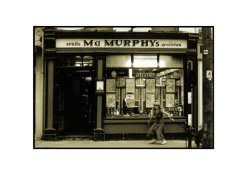This reminds me of the perennial article in gun magazines about how to pull the trigger. It shows up once a year, just before or just after the article discussing whether or not the .30/.30 is adequate for whitetails.
At my photo club, I am regularly amazed by how many people express surprise and gratitude when we discuss these issues, because they have never had anyone help them with them before.
I tell people the following (this assumes a prism finder):
1. stand with weight evenly distributed between your feet, and weight on both the heels and balls of your feet;
2. square your body so it is facing directly toward your subject;
3. raise your camera to your eye and help support it by tucking your elbows into your body comfortably;
4. the camera should be resting comfortably in your hands - not gripped tightly in your hands;
5. all adjustments for focus and exposure and framing should be made to your satisfaction before moving to the instant of exposure;
6. self-assess whether you feel any unusual tension in your body, and deal with it by relaxing it;
7. inhale slowly but steadily, until you are comfortable, and then pause slightly;
8. exhale gently until you are about half way, then pause slightly;
9. squeeze the shutter release smoothly and carefully until the shutter releases, then pause very slightly thereafter;
10. finish exhaling; and
11. look again at the scene through the viewfinder, to see if something has appeared that may cause you to want to shoot another.
Most of the above can be done far more quickly than it takes to type it or read it, and it can easily be reduced to near unconscious habit.
As I understand it, the breathing part of the process is recommended by those who shoot firearms.
EDIT: as mentioned below by E. von Hoegh, it can help to take several deep, unhurried breaths before the "half" breath at the time of exposure.











